Fine Art
In exchange of… ?
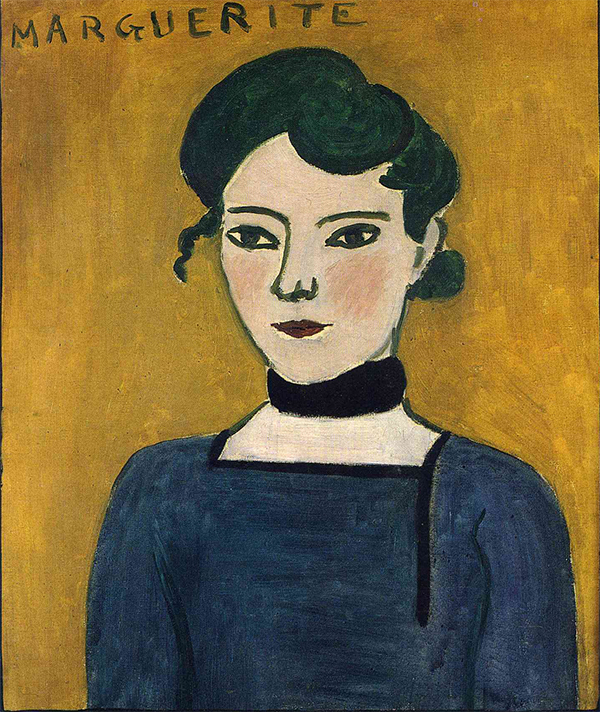
“Portrait de Marguerite”, 1906-1907.
Matisse traded this painting of his daughter with Pablo Picasso for one of Picasso’s works. The piece remained in Picasso’s personal collection for years to come.
Image courtesy of: Wikipedia
In today’s age of “Capitalism of the art market”, it is interesting to think back on the ancient practice of “artist exchange”. For many years, there has been an informal and little talked-about system of exchanges between creative people. This practice was born out of mutual admiration, mutual rivalry, or mutual brotherhood… perhaps it was a combination of all three aspects?
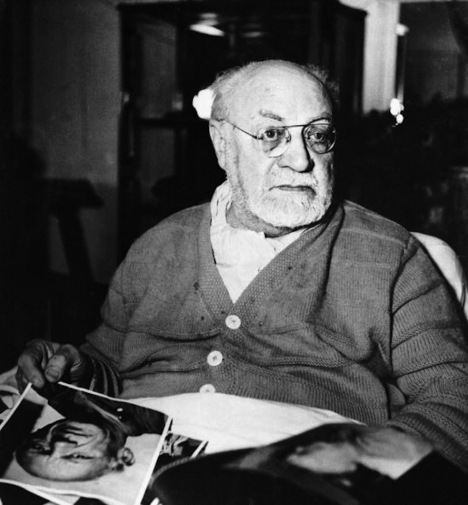
Henri Matisse with a photograph of his frenemy Pablo Picasso.
Image courtesy of: Gina Art
For example… it was known that Matisse and Picasso inspired each other. Both friends and rivals, the two enjoyed each other’s company and exchanged many heated conversations. During their friendship, the two artists were known to exchange each other’s works among themselves.
About Picasso, Matisse said, “Only one person has the right to criticize me. It’s Picasso.” After his death in 1954, Picasso said of Matisse, “When Matisse died, he left me his odalisques as a legacy” referring to Matisse’s most popular subjects. In homage to his friend, he then proceeded to interpret them in a series of his own paintings. He was quoted as saying, “All things considered, there is only Matisse.”
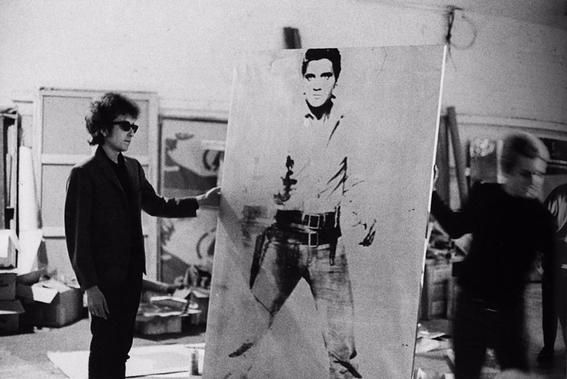
Dylan examining the 1963 silk-screen portrait of Elvis Presley. Of Presley, Dylan said, “Hearing him for the first time was like getting out of jail.”
Image courtesy of: Cultura Colectiva
Clearly, trading works, even for the best of friends, can be tricky. Artists are especially ego-centric, and the fear of rejection remains strong. Concerns about transportation, storage, and appropriate placement are legitimate.
As evidence, in 1966 when Bob Dylan visited Andy Warhol’s studio in Manhattan, he sat for a portrait. Warhol was star-struck and offered Dylan a portrait of a celebrity he had previously painted (for example, Edie Sedgwick and Dennis Hopper were among those painted). The painting he offered was one of Elvis Presley, who Warhol knew Dylan loved. Dylan accepted; however maneuvering the nearly seven-foot-long canvas into his station wagon was nearly impossible. Finally securing it to the roof of his car, he managed to get it home only to give it to his manager. When Warhol asked Dylan about the 1963 silk-screen portrait, he admitted that he gave it to his manager only to conclude, “But if you gave me another one, Andy, I wouldn’t make that mistake again.”
It turns out that the painting was later traded for a sofa. Now, the piece hangs in New York’s MOMA after being sold at auction for $53 million in May 2019.
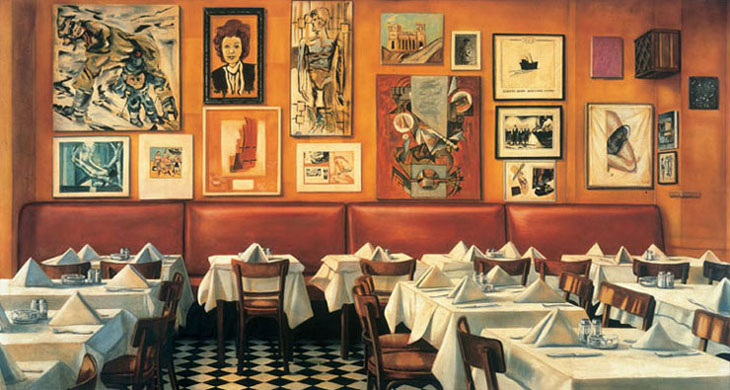
“Paris Bar Berlin”, 1993. Oil on canvas.
Dimensions are: 212 cm. x 382 cm.
For many years, Paris Bar was the nocturnal spot for those in Berlin’s art scene. Among those was Kippenberger who immortalized this beloved (and fatal) salon in oil several times.
Image courtesy of: Saatchi Gallery
There are many bad transactions among art trades. Artists, commonly known as “starving artists” have paid for restaurant bills and hotels invoices with their canvases. Salvador Dali commonly paid bills of all kinds with a personal check on which he would doodle… knowing that meant it was unlikely the check would get cashed. It is also known that Dali gave his dermatologist several works as payment for treatment.
Trading for alcohol has traditionally been a pattern across creative types. For example, the German artist, Martin Kippenberger traded his art for food and drink on a large scale. His canvases line Berlin’s Paris Bar… sadly, that came to an end when he died of liver cancer at the young age of 44.
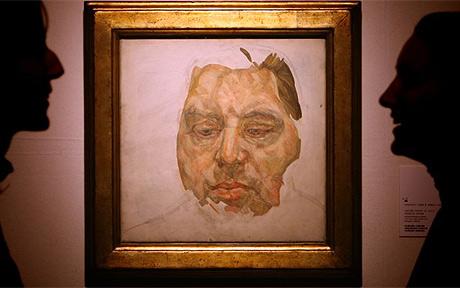
“Francis Bacon”, 1956-57. Oil and charcoal on canvas.
Dimensions: 14 inches x 14 inches
A portrait of Francis Bacon painted by Lucian Freud. The two exchanged works early on in their friendship.
Image courtesy of: The Telegraph, photographed by: Paul Grover
Trading paintings was common during the days of the Impressionists. Artists worked together, gaining valuable knowledge and working off each other’s creativity. Renoir and Monet painted together. Cezanne painted with Picasso. Chagall and Picasso lived near each other and shared time together. However, none of these artists lost their individuality. No one’s creativity was quashed… actually, you might argue that creativity actually grew out of sharing ideas with other masters.
It can be argued that sharing ideas makes for better art; and no one can understand this better than an artist himself. Rashid Johnson, the American artist who produces conceptual post-black art and has received critical attention and acclaim compares this to his relationship with Matthew Day Jackson. The two have been friends for the past ten years, since they were both represented by the same gallery in New York City. They continue to exchange works of increasing seriousness, establishing set parameters in advance. Johnson has said, “Everyone who comes over to my house will ask, ‘Did you make this?’ And I always have to shamefully admit that I didn’t. It’s a really healthy jealousy that I have of an object. I live with it, and I love it. I probably borrow from it; it’s about abstraction and place and reimagined histories. It’s a great work, and I’m really proud to have it in my home.”
Enough said!
